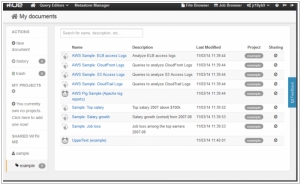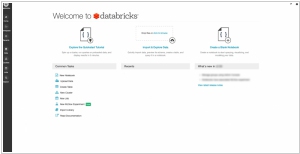Amazon EMR vs Databricks
July 21, 2023 | Author: Michael Stromann
See also:
Top 10 Big Data platforms
Top 10 Big Data platforms
Amazon EMR (Elastic MapReduce) and Databricks are both powerful big data processing platforms, but they have distinct differences that set them apart. One key difference lies in their underlying infrastructure and deployment models. Amazon EMR is a managed service offered by AWS, allowing users to easily provision and scale Hadoop and Spark clusters on Amazon's cloud infrastructure. It offers the flexibility to use various data storage options within the AWS ecosystem, making it a suitable choice for organizations heavily invested in the AWS environment. On the other hand, Databricks is a unified analytics platform that runs on top of Apache Spark. It provides a collaborative workspace where data engineers and data scientists can work together to build and deploy data pipelines and machine learning models. Databricks can be deployed on multiple cloud providers or even on-premises, giving users the freedom to choose their preferred infrastructure.
Another significant difference lies in their ease of use and user experience. Amazon EMR provides a straightforward setup and management process through the AWS Management Console. It integrates well with other AWS services, making it easy to use for organizations already utilizing AWS resources. However, managing Spark clusters on EMR might require some manual configurations and optimizations. In contrast, Databricks offers a more user-friendly and intuitive interface, making it easy for data engineers and data scientists to collaborate and work on data projects. Databricks provides pre-configured and optimized Spark clusters, reducing the overhead of cluster management and allowing users to focus more on data analysis and model development.
When it comes to pricing, there are differences in their cost models. Amazon EMR pricing is based on the resources used and the instance types chosen for the clusters, along with the additional costs for data storage and data transfer within the AWS ecosystem. Databricks, on the other hand, offers a subscription-based pricing model, where users pay for the number of Databricks workspaces and the resources utilized within those workspaces. The choice between Amazon EMR and Databricks will depend on the specific needs and requirements of the organization, with Amazon EMR being a flexible and cost-effective choice for AWS-centric environments and Databricks providing a user-friendly and collaborative analytics platform with the freedom to deploy across different cloud providers or on-premises.
See also: Top 10 Big Data platforms
Another significant difference lies in their ease of use and user experience. Amazon EMR provides a straightforward setup and management process through the AWS Management Console. It integrates well with other AWS services, making it easy to use for organizations already utilizing AWS resources. However, managing Spark clusters on EMR might require some manual configurations and optimizations. In contrast, Databricks offers a more user-friendly and intuitive interface, making it easy for data engineers and data scientists to collaborate and work on data projects. Databricks provides pre-configured and optimized Spark clusters, reducing the overhead of cluster management and allowing users to focus more on data analysis and model development.
When it comes to pricing, there are differences in their cost models. Amazon EMR pricing is based on the resources used and the instance types chosen for the clusters, along with the additional costs for data storage and data transfer within the AWS ecosystem. Databricks, on the other hand, offers a subscription-based pricing model, where users pay for the number of Databricks workspaces and the resources utilized within those workspaces. The choice between Amazon EMR and Databricks will depend on the specific needs and requirements of the organization, with Amazon EMR being a flexible and cost-effective choice for AWS-centric environments and Databricks providing a user-friendly and collaborative analytics platform with the freedom to deploy across different cloud providers or on-premises.
See also: Top 10 Big Data platforms





